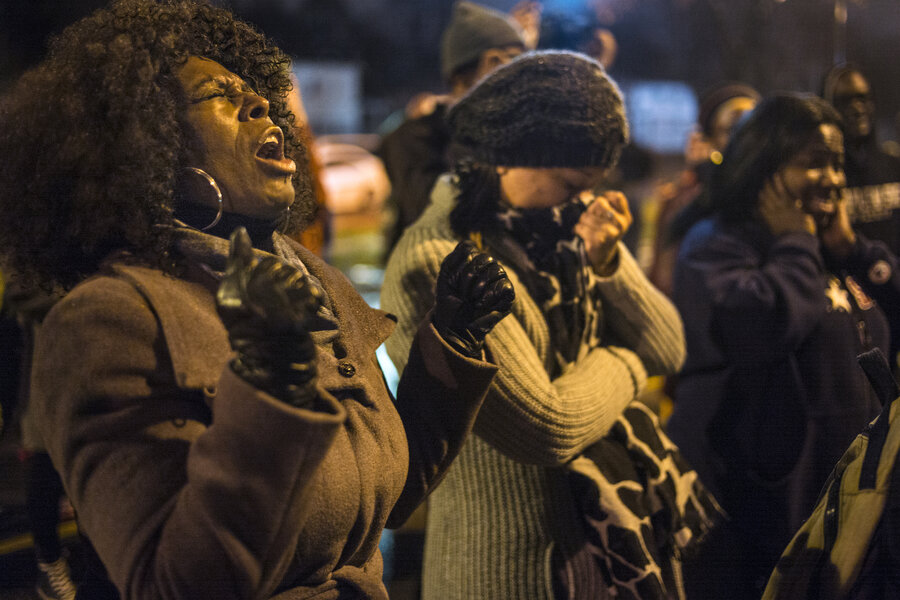Was Jamar Clark handcuffed when shot by police? Feds investigate.
Loading...
The FBI has agreed to open a federal civil rights probe into the altercation between police and a black man, Jamar ONeal Clark, amid protests that Mr. Clark was handcuffed when shot.
The shot was not initially fatal and Clark was taken to a nearby hospital, but Clark died Monday from the injury, after being taken off life support.
The incident occurred early Sunday morning when police were called on a report of assault. Nekelia Sharp, a neighbor from across the street, told investigators that Clark and his girlfriend were in an argument, and an ambulance was called.
When two officers arrived at the scene, Clark was interfering with paramedics, according to police accounts. A struggle ensued and an officer fired at least once, hitting Clark in the head, officials said. The identities of the two officers have not been revealed.
The officers on the scene were not wearing body cameras at the time, nor was there a dash cam on their vehicle, but there was a mobile police camera stationed in the area. Investigators have also received partial footage from witnesses cell phones and public housing cameras.
State investigators are now trying to determine whether Clark was restrained when shot. Though police initially said he was not handcuffed, authorities have since confirmed there were handcuffs at the scene. Whether or not they were employed is still being investigated.
"We're still examining whether or not they were on Mr. Clark or whether or not they were just (fallen) at the scene. That's what we're trying to ascertain," state Bureau of Criminal Apprehension Superintendent Drew Evans said at a news conference Tuesday.
Department of Public Safety spokesman Bruce Gordon reiterated that none of the video footage showed the entire encounter and as such will not be released until it can be verified. He also said officials will not discuss specifics to protect witness statements.
The incident is the latest in a series of high-profile police shootings and violent arrests involving white officers and black suspects across the United States.
Sunday's shooting has sparked prolonged protests, as hundreds, including NAACP and Black Lives Matter members, blocked traffic on a interstate highway Monday night and dozens set up tents outside the 4th police precinct near the scene of the shooting, demanding the release of video footage and the officers’ identities. At least two police vehicles were also damaged in the protests and 43 people have been arrested.
Minnesota has had problems with police-community relations in the past. In a similar incident in 2013, in which police shot a black man accused of burglary sparked outrage and a civil lawsuit. The officers involved were not indicted. In 2014, a prominent civil rights activist stirred controversy when he claimed he was a victim of brutality. Police said he instigated aggression.
According to a report prepared for the State of Minnesota Council on Black Minnesotans, “Of all the high level issues of concerns within Minnesota’s Black populations, including issues related to jobs, health, and education, the problems associated with the criminal justice system are viewed by people of African descent as the most intractable and difficult to change.” Data released by the Council on Crime and Justice in 2012 revealed that while 85 percent of the Minnesota population was white, and 5.2 percent were black. However, blacks make up 37 percent of the Minnesota prison population.
“On any given day in Minnesota, a black person is more than 20 times more likely to be stopped for a traffic offense than a white person,” the Council on Crime and Justice reported. The average racial disparity of arrest rates between African Americans and Caucasians is 10:1.
This report contains material from the Associated Press.








